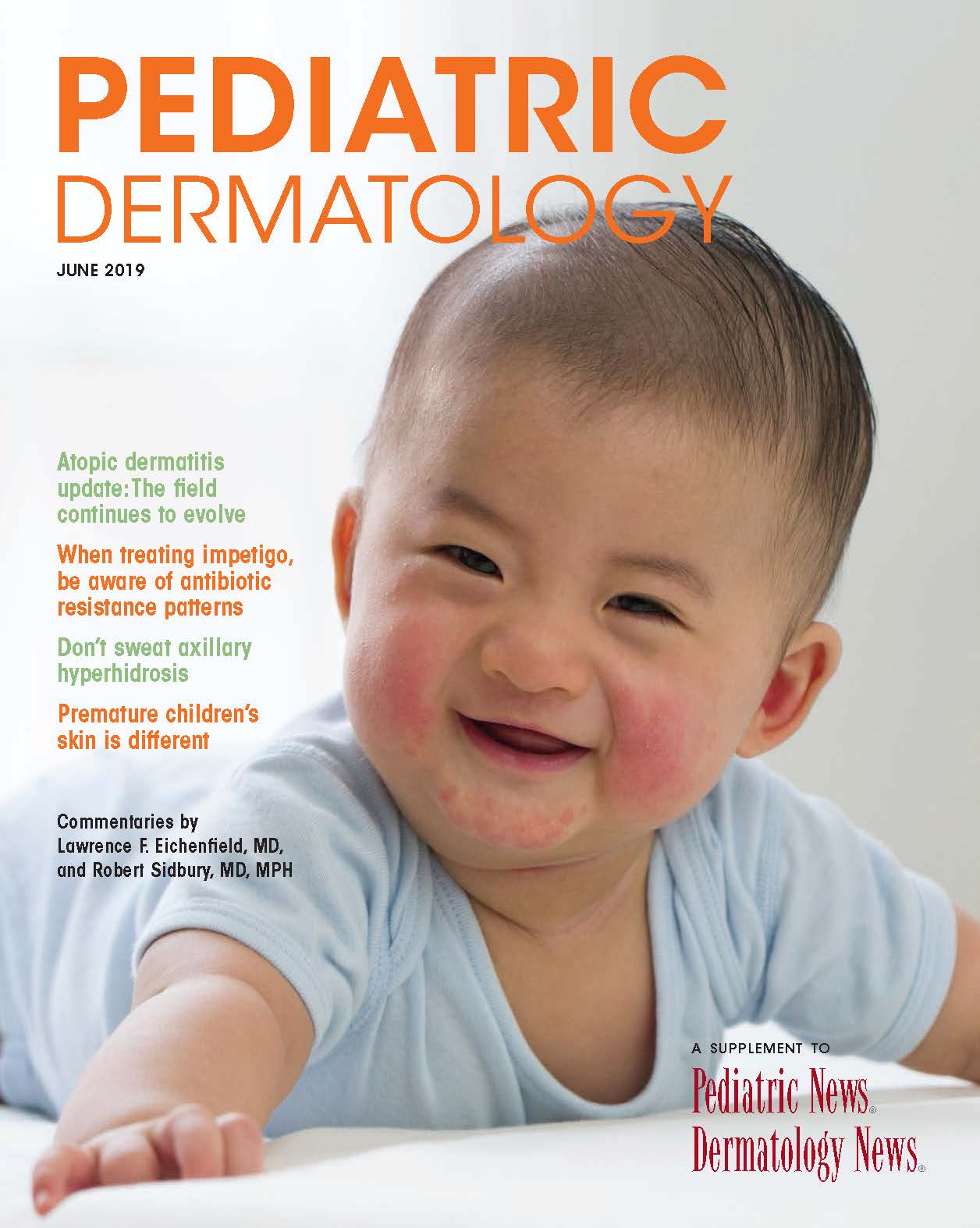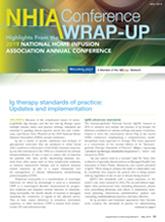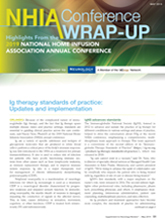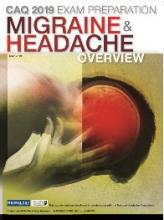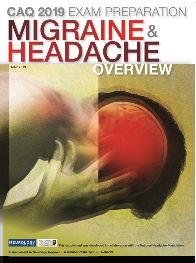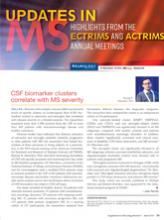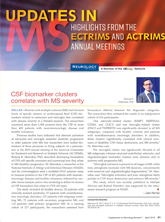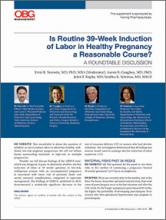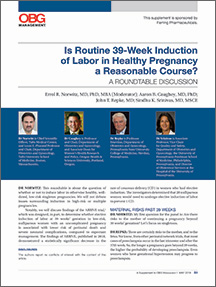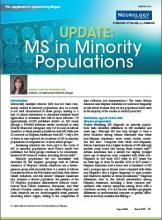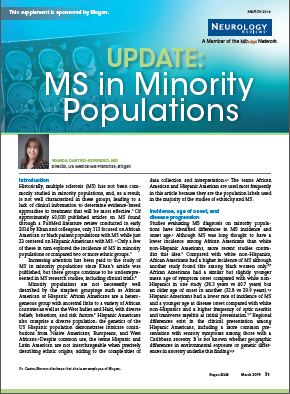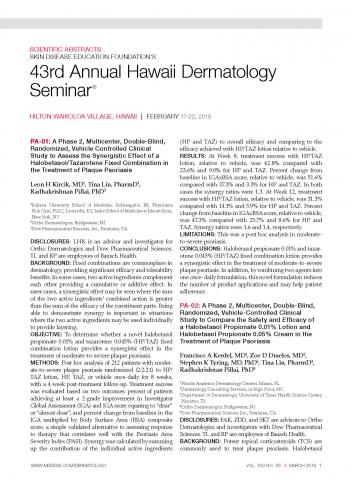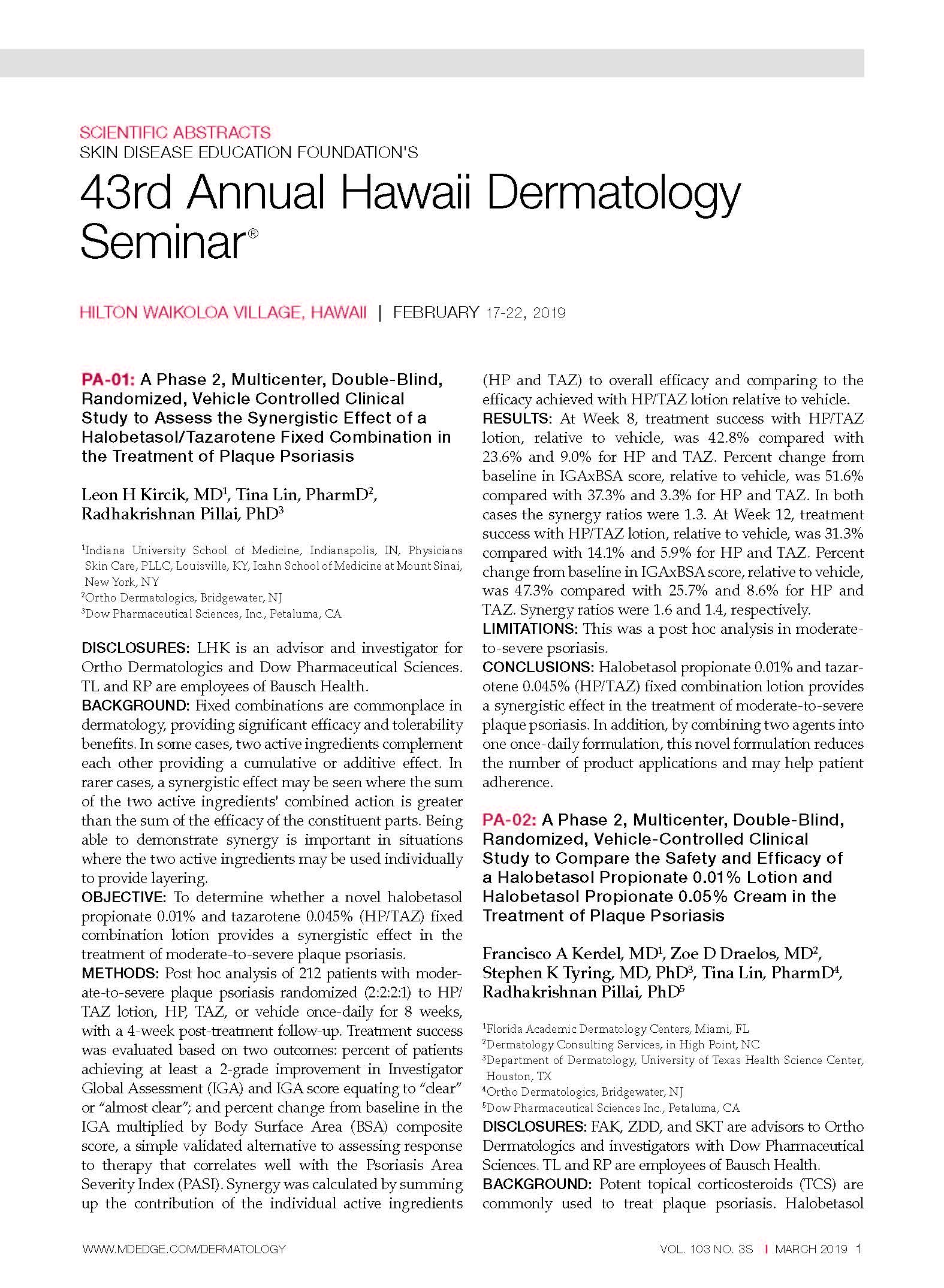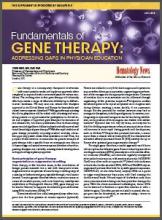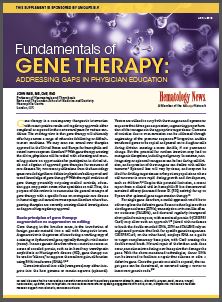User login
Pediatric Dermatology: Summer 2019
Click here to read the supplement.
The 2019 Pediatric Dermatology supplement features a selection of articles published in Dermatology News and Pediatric News, with commentary by Lawrence F. Eichenfield, MD, and Robert Sidbury, MD.
Dr. Eichenfield is chief of pediatric and adolescent dermatology at Rady Children’s Hospital in San Diego. He is vice chair of dermatology and professor of dermatology and pediatrics at the University of California, San Diego.
Dr. Sidbury is chief of dermatology at Seattle Children’s Hospital and professor, department of pediatrics, University of Washington, Seattle.
Highlights include:
- Atopic dermatitis update: The field continues to evolve
- When treating impetigo, be aware of antibiotic resistance patterns
- Don’t sweat axillary hyperhidrosis
- Premature children’s skin is different
Click here to read the supplement.
Click here to read the supplement.
The 2019 Pediatric Dermatology supplement features a selection of articles published in Dermatology News and Pediatric News, with commentary by Lawrence F. Eichenfield, MD, and Robert Sidbury, MD.
Dr. Eichenfield is chief of pediatric and adolescent dermatology at Rady Children’s Hospital in San Diego. He is vice chair of dermatology and professor of dermatology and pediatrics at the University of California, San Diego.
Dr. Sidbury is chief of dermatology at Seattle Children’s Hospital and professor, department of pediatrics, University of Washington, Seattle.
Highlights include:
- Atopic dermatitis update: The field continues to evolve
- When treating impetigo, be aware of antibiotic resistance patterns
- Don’t sweat axillary hyperhidrosis
- Premature children’s skin is different
Click here to read the supplement.
Click here to read the supplement.
The 2019 Pediatric Dermatology supplement features a selection of articles published in Dermatology News and Pediatric News, with commentary by Lawrence F. Eichenfield, MD, and Robert Sidbury, MD.
Dr. Eichenfield is chief of pediatric and adolescent dermatology at Rady Children’s Hospital in San Diego. He is vice chair of dermatology and professor of dermatology and pediatrics at the University of California, San Diego.
Dr. Sidbury is chief of dermatology at Seattle Children’s Hospital and professor, department of pediatrics, University of Washington, Seattle.
Highlights include:
- Atopic dermatitis update: The field continues to evolve
- When treating impetigo, be aware of antibiotic resistance patterns
- Don’t sweat axillary hyperhidrosis
- Premature children’s skin is different
Click here to read the supplement.
Acne and Rosacea - July 2019 Supplement
The 2019 Acne & Rosacea supplement features a selection of articles on these two topics published in Dermatology News during the previous year, with commentaries by dermatologists Hilary E. Baldwin, MD, and Julie C. Harper, M.D., both past presidents of the American Acne & Rosacea Society. They were also both members of the American Academy of Dermatology work group that developed the AAD’s updated guidelines on the management of acne vulgaris, published in 2016.
Highlights include:
- The global incidence of rosacea
- Rosacea likely undertreated in skin of color
- The impact of isotretinoin on the dermal microbiome
- Laser treatments of acne and rosacea
The 2019 Acne & Rosacea supplement features a selection of articles on these two topics published in Dermatology News during the previous year, with commentaries by dermatologists Hilary E. Baldwin, MD, and Julie C. Harper, M.D., both past presidents of the American Acne & Rosacea Society. They were also both members of the American Academy of Dermatology work group that developed the AAD’s updated guidelines on the management of acne vulgaris, published in 2016.
Highlights include:
- The global incidence of rosacea
- Rosacea likely undertreated in skin of color
- The impact of isotretinoin on the dermal microbiome
- Laser treatments of acne and rosacea
The 2019 Acne & Rosacea supplement features a selection of articles on these two topics published in Dermatology News during the previous year, with commentaries by dermatologists Hilary E. Baldwin, MD, and Julie C. Harper, M.D., both past presidents of the American Acne & Rosacea Society. They were also both members of the American Academy of Dermatology work group that developed the AAD’s updated guidelines on the management of acne vulgaris, published in 2016.
Highlights include:
- The global incidence of rosacea
- Rosacea likely undertreated in skin of color
- The impact of isotretinoin on the dermal microbiome
- Laser treatments of acne and rosacea
NHIA Conference Wrap-Up
This supplement to Neurology Reviews compiles news briefs from the 2019 National Home Infusion Association annual meeting, which was held in March in Orlando, Florida.
Click here to read the supplement.
This supplement to Neurology Reviews compiles news briefs from the 2019 National Home Infusion Association annual meeting, which was held in March in Orlando, Florida.
Click here to read the supplement.
This supplement to Neurology Reviews compiles news briefs from the 2019 National Home Infusion Association annual meeting, which was held in March in Orlando, Florida.
Click here to read the supplement.
2019 CAQ Exam Preparation: Migraine & Headache Overview
The National Headache Foundation is offering a Certificate in Added Qualification (CAQ) exam in Headache Medicine from September 16 through October 1, 2019. In preparation for the CAQ, this supplement to Neurology Reviews walks readers through pertinent topics in migraine and headache that will be covered in the exam.
Benefits of completing the CAQ exam include:
- Validation of a level in expertise in headache medicine
- Possibility of more patient referrals
- Enhanced credibility and satisfaction of providing your patients with the best possible care
- Recognition of skills when dealing with managed care and government agencies
Click here to read the supplement and learn more about CAQ exam enrollment.
The National Headache Foundation is offering a Certificate in Added Qualification (CAQ) exam in Headache Medicine from September 16 through October 1, 2019. In preparation for the CAQ, this supplement to Neurology Reviews walks readers through pertinent topics in migraine and headache that will be covered in the exam.
Benefits of completing the CAQ exam include:
- Validation of a level in expertise in headache medicine
- Possibility of more patient referrals
- Enhanced credibility and satisfaction of providing your patients with the best possible care
- Recognition of skills when dealing with managed care and government agencies
Click here to read the supplement and learn more about CAQ exam enrollment.
The National Headache Foundation is offering a Certificate in Added Qualification (CAQ) exam in Headache Medicine from September 16 through October 1, 2019. In preparation for the CAQ, this supplement to Neurology Reviews walks readers through pertinent topics in migraine and headache that will be covered in the exam.
Benefits of completing the CAQ exam include:
- Validation of a level in expertise in headache medicine
- Possibility of more patient referrals
- Enhanced credibility and satisfaction of providing your patients with the best possible care
- Recognition of skills when dealing with managed care and government agencies
Click here to read the supplement and learn more about CAQ exam enrollment.
Updates in MS: Highlights From the ECTRIMS and ACTRIMS Annual Meetings
This supplement to Neurology Reviews compiles news briefs from the 2018 ECTRIMS annual meeting in Berlin and the 2019 annual ACTRIMS meeting in Dallas.
This supplement to Neurology Reviews compiles news briefs from the 2018 ECTRIMS annual meeting in Berlin and the 2019 annual ACTRIMS meeting in Dallas.
This supplement to Neurology Reviews compiles news briefs from the 2018 ECTRIMS annual meeting in Berlin and the 2019 annual ACTRIMS meeting in Dallas.
Is Routine 39-Week Induction of Labor in Healthy Pregnancy a Reasonable Course?
In this supplement to OBG Management a panel of experts discuss the risks and benefits of routine induction of labor (IOL) at 39 weeks. The panelists examine the findings from the ARRIVE trial and the potential impact on real-world practice. The experts also describe their own approach to IOL at 39 weeks and what they see for the future.
Panelists
- Errol R. Norwitz, MD, PhD, MBA (Moderator)
- Aaron B. Caughey, MD, PhD
- John T. Repke, MD
- Sindhu K. Srinivas, MD, MSCE
In this supplement to OBG Management a panel of experts discuss the risks and benefits of routine induction of labor (IOL) at 39 weeks. The panelists examine the findings from the ARRIVE trial and the potential impact on real-world practice. The experts also describe their own approach to IOL at 39 weeks and what they see for the future.
Panelists
- Errol R. Norwitz, MD, PhD, MBA (Moderator)
- Aaron B. Caughey, MD, PhD
- John T. Repke, MD
- Sindhu K. Srinivas, MD, MSCE
In this supplement to OBG Management a panel of experts discuss the risks and benefits of routine induction of labor (IOL) at 39 weeks. The panelists examine the findings from the ARRIVE trial and the potential impact on real-world practice. The experts also describe their own approach to IOL at 39 weeks and what they see for the future.
Panelists
- Errol R. Norwitz, MD, PhD, MBA (Moderator)
- Aaron B. Caughey, MD, PhD
- John T. Repke, MD
- Sindhu K. Srinivas, MD, MSCE
Update: MS in Minority Populations
Click here to read the supplement.
Historically, multiple sclerosis (MS) has not been commonly studied in minority populations. However, important challenges must be overcome to provide optimal MS treatment in this patient population. In this supplement from Neurology Reviews, Dr. Castro-Borrero discusses MS in African Americans and Hispanic Americans, including:
- Incidence, age of onset, and disease progression
- Barriers to optimal treatment
- Recommendations for improved MS management
About the Author
Click here to read the supplement.
Historically, multiple sclerosis (MS) has not been commonly studied in minority populations. However, important challenges must be overcome to provide optimal MS treatment in this patient population. In this supplement from Neurology Reviews, Dr. Castro-Borrero discusses MS in African Americans and Hispanic Americans, including:
- Incidence, age of onset, and disease progression
- Barriers to optimal treatment
- Recommendations for improved MS management
About the Author
Click here to read the supplement.
Historically, multiple sclerosis (MS) has not been commonly studied in minority populations. However, important challenges must be overcome to provide optimal MS treatment in this patient population. In this supplement from Neurology Reviews, Dr. Castro-Borrero discusses MS in African Americans and Hispanic Americans, including:
- Incidence, age of onset, and disease progression
- Barriers to optimal treatment
- Recommendations for improved MS management
About the Author
Scientific Abstracts; Skin Disease Education Foundation’s 43rd Annual Hawaii Dermatology Seminar
Highlights from the 2019 Society of Gynecologic Surgeons Scientific Meeting
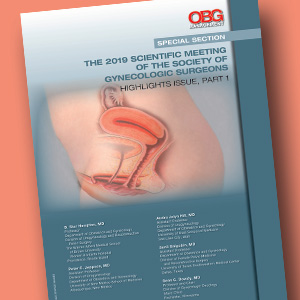
- Rising to the challenges in gynecologic surgical care
- Anterior, apical, posterior: Vaginal anatomy for the gynecologic surgeon
- Beyond enhanced recovery after surgery
B. Star Hampton, MD
Professor
Department of Obstetrics and Gynecology
Division of Urogynecology and Reconstructive
Pelvic Surgery
The Warren Albert Medical School
of Brown University
Women & Infants Hospital
Providence, Rhode Island
Peter C. Jeppson, MD
Assistant Professor
Division of Urogynecology
Department of Obstetrics and Gynecology
University of New Mexico School of Medicine
Albuquerque, New Mexico
Audra Jolyn Hill, MD
Assistant Professor
Division of Urogynecology
Department of Obstetrics and Gynecology
University of Utah School of Medicine
Salt Lake City, Utah
Sunil Balgobin, MD
Assistant Professor
Department of Obstetrics and Gynecology
Division of Female Pelvic Medicine
and Reconstructive Surgery
University of Texas Southwestern Medical Center
Dallas, Texas
Sean C. Dowdy, MD
Professor and Chair
Division of Gynecologic Oncology
Mayo Clinic
Rochester, Minnesota

- Rising to the challenges in gynecologic surgical care
- Anterior, apical, posterior: Vaginal anatomy for the gynecologic surgeon
- Beyond enhanced recovery after surgery
B. Star Hampton, MD
Professor
Department of Obstetrics and Gynecology
Division of Urogynecology and Reconstructive
Pelvic Surgery
The Warren Albert Medical School
of Brown University
Women & Infants Hospital
Providence, Rhode Island
Peter C. Jeppson, MD
Assistant Professor
Division of Urogynecology
Department of Obstetrics and Gynecology
University of New Mexico School of Medicine
Albuquerque, New Mexico
Audra Jolyn Hill, MD
Assistant Professor
Division of Urogynecology
Department of Obstetrics and Gynecology
University of Utah School of Medicine
Salt Lake City, Utah
Sunil Balgobin, MD
Assistant Professor
Department of Obstetrics and Gynecology
Division of Female Pelvic Medicine
and Reconstructive Surgery
University of Texas Southwestern Medical Center
Dallas, Texas
Sean C. Dowdy, MD
Professor and Chair
Division of Gynecologic Oncology
Mayo Clinic
Rochester, Minnesota

- Rising to the challenges in gynecologic surgical care
- Anterior, apical, posterior: Vaginal anatomy for the gynecologic surgeon
- Beyond enhanced recovery after surgery
B. Star Hampton, MD
Professor
Department of Obstetrics and Gynecology
Division of Urogynecology and Reconstructive
Pelvic Surgery
The Warren Albert Medical School
of Brown University
Women & Infants Hospital
Providence, Rhode Island
Peter C. Jeppson, MD
Assistant Professor
Division of Urogynecology
Department of Obstetrics and Gynecology
University of New Mexico School of Medicine
Albuquerque, New Mexico
Audra Jolyn Hill, MD
Assistant Professor
Division of Urogynecology
Department of Obstetrics and Gynecology
University of Utah School of Medicine
Salt Lake City, Utah
Sunil Balgobin, MD
Assistant Professor
Department of Obstetrics and Gynecology
Division of Female Pelvic Medicine
and Reconstructive Surgery
University of Texas Southwestern Medical Center
Dallas, Texas
Sean C. Dowdy, MD
Professor and Chair
Division of Gynecologic Oncology
Mayo Clinic
Rochester, Minnesota
Fundamentals of Gene Therapy: Addressing Gaps in Physician Education
Click here to read supplement.
Gene therapy is a contemporary therapeutic intervention with recent positive results and regulatory approvals either completed or expected in the next several years for various conditions. In this supplement, learn more about:
- Basic principles of gene therapy
- In vivo vs ex vivo methods of gene transfer
- Vector types
- Clinical Considerations
About the Author
Click here to read supplement.
Click here to read supplement.
Gene therapy is a contemporary therapeutic intervention with recent positive results and regulatory approvals either completed or expected in the next several years for various conditions. In this supplement, learn more about:
- Basic principles of gene therapy
- In vivo vs ex vivo methods of gene transfer
- Vector types
- Clinical Considerations
About the Author
Click here to read supplement.
Click here to read supplement.
Gene therapy is a contemporary therapeutic intervention with recent positive results and regulatory approvals either completed or expected in the next several years for various conditions. In this supplement, learn more about:
- Basic principles of gene therapy
- In vivo vs ex vivo methods of gene transfer
- Vector types
- Clinical Considerations
